Despite the challenges of 2020, The Environmental Partnership and our growing coalition of participating companies pressed forward to demonstrate the oil and natural gas industry’s commitment to reduce emissions and deliver improved environmental performance by Taking Action, Learning, and Collaborating. Our companies implemented the program in every major oil and natural gas basin across the country, launched a new Flare Management Program to help companies utilize available practices to avoid flaring and minimize emissions when flaring does occur, and safely implemented two new midstream-focused environmental performance programs. The Environmental Partnership’s scope and implementation continued to grow throughout a very difficult year and we’re proud of the resolve of the industry to continue tackling new challenges.
See our progress in the 2021 Annual Report (4 MB).
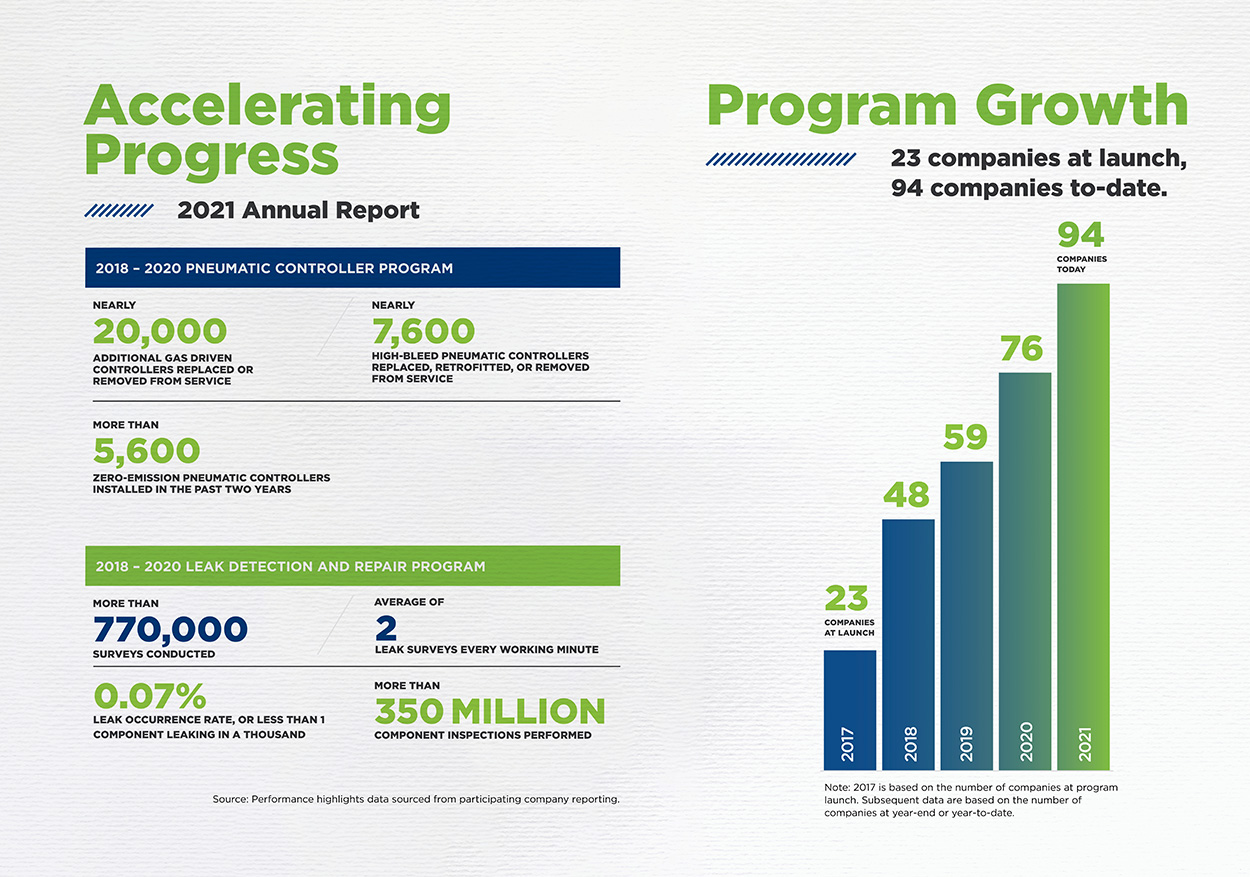

Mike Sommers
President & CEO, API
As global leaders consider climate solutions, the natural gas and oil industry is already there, focused on delivering meaningful energy and environmental progress. I am proud that this initiative has paved the way for additional policies and programs designed to ensure the long-term viability of the U.S. energy sector.

Matthew Todd
Director, The Environmental Partnership
As the country continues to recover from the ongoing impact of the pandemic, we’re hopeful for the future and grateful for the community of dedicated women and men of our industry that steadfastly do their part to keep the nation moving forward.

Vanessa Ryan
Chair, The Environmental Partnership
Manager, Carbon and Climate Policy, Chevron
The Environmental Partnership’s scope and implementation continued to grow despite the challenges of the previous year and we’re confident in the resolve of the industry to tackle new challenges as we strive to meet the mission of the program and never stop improving.
2020 Environmental Performance Highlights
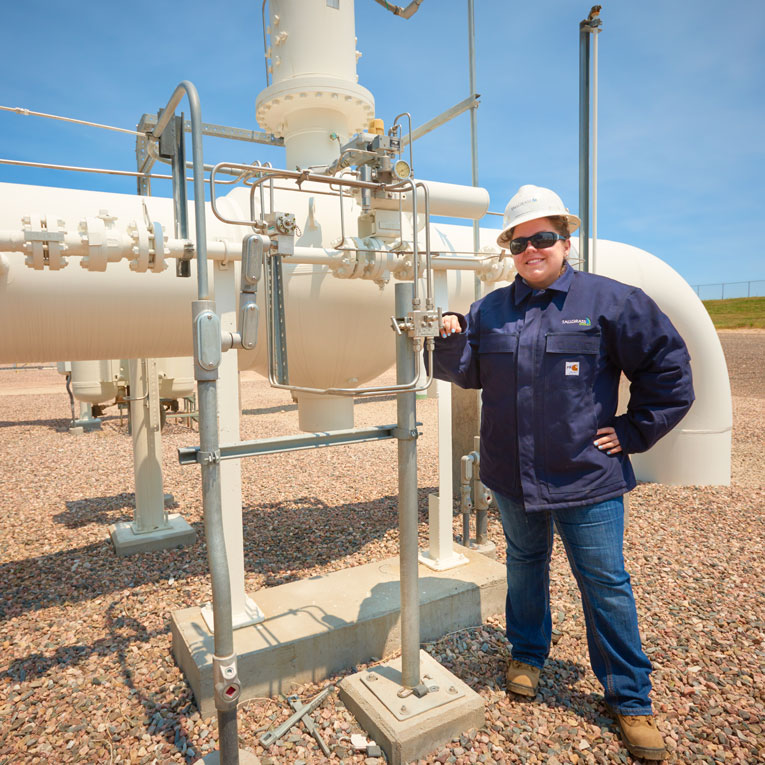
Leak Detection and Repair
- More than 85,000 sites surveyed
- More than 430,000 surveys conducted
- More than 235 million component inspections performed
- 0.04% leak occurrence rate, or less than 1 component leaking in two thousand
Pipeline Blowdown
- More than 400 emission reduction methods implemented during pipeline blowdowns
Compressor Program
- Rod packings changed on more than 2,000 reciprocating compressors
- Approved emission reduction practices on more than 320 compressors
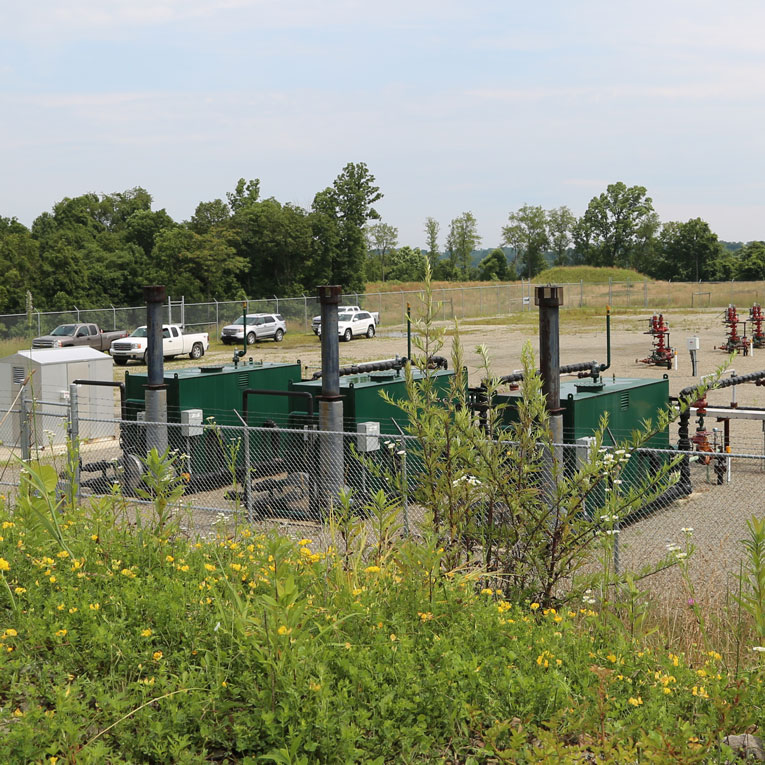
Manual Liquids Unloading
- Emissions minimized by monitoring more than 44,000 manual liquids unloading events
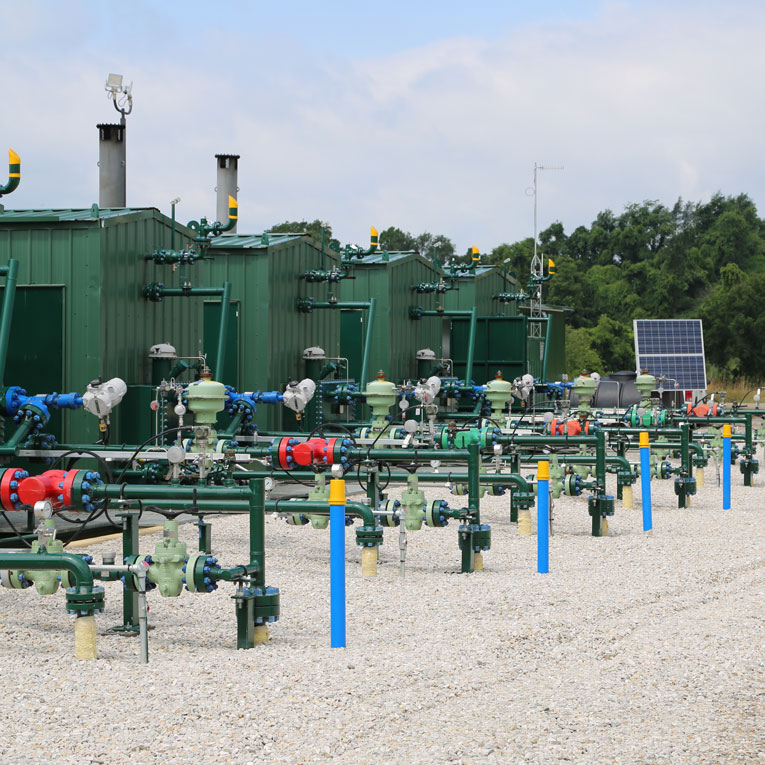
Pneumatic Controllers
- More than 9,200 additional gas driven controllers replaced or removed from service
- More than 970 high-bleed pneumatic controllers replaced, retrofitted, or removed from service
- More than 2,700 zero-emission pneumatic controllers installed at new sites
- 54 participating companies no longer have high-bleed pneumatic controllers in their operations
Flare Management Program
In 2020, The Environmental Partnership launched its latest environmental performance program, which is focused on reducing flaring of associated gas in oilfield operations. The flare management program expands on The Environmental Partnership’s core mission to share information on best practices, advance new and proven technologies, foster collaboration to reduce emissions and collect data to inform efforts to minimize flaring.
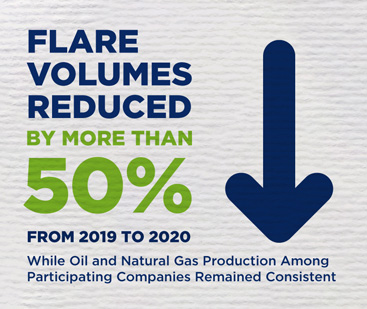
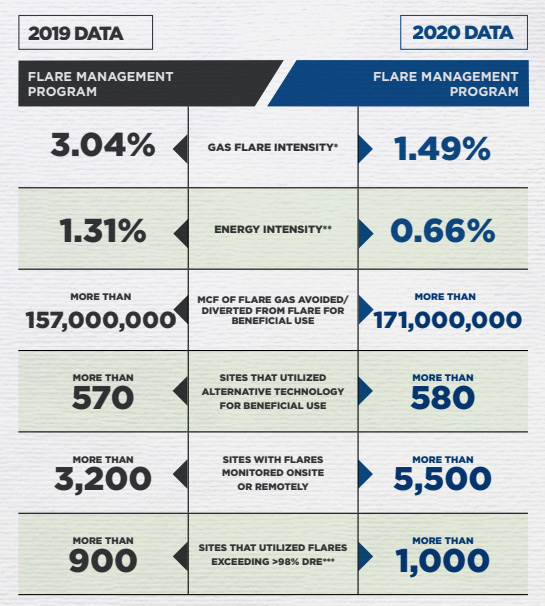
*Gas Flare Intensity – Flaring relative to Gas Production in Oil Fields (MCF gas flared / MCF gas produced)
**Energy Intensity – Flaring Relative to Oil and Gas Production (BOE gas flared / BOE produced)
*** DRE: Destruction and Removal Efficiency
Improvement Through Collaboration
In addition to the Actions that each participating company took to further reduce the industry’s environmental footprint, The Partnership continued to advance the program’s Learning and Collaborating principles. The Environmental Partnership has grown to become an effective tool to coordinate and facilitate communications to companies participating in key oil and natural gas basins across the country. In 2020, The Partnership fostered the collaboration to advance the development and implementation of new methane detection technologies through substantive engagement with Colorado State University, Bridger Photonics, and NASA’s Jet Propulsion Laboratory Methane Source Finder team.

“We welcomed the opportunity to engage The Environmental Partnership and introduce our Gas Mapping LiDAR technology to companies that are participating in the program. It’s a fast-moving field and the industry is really pushing the envelope to better understand and mitigate methane emissions. We’re thrilled to work with them and be a part of the solution.”
Peter Roos
CEO, Bridger Photonics

“Our methane research program has conducted numerous aerial remote-sensing surveys across the United States. The Partnership provided a platform to share our data with participating companies in the Permian basin to investigate and take steps to address emissions. The collaboration provided us an opportunity to connect our efforts with the operators on the ground that would not exist otherwise.”
Riley Duren
Research Scientist, U. Arizona; CEO, Carbon Mapper; Engineering Fellow, NASA Jet Propulsion Laboratory
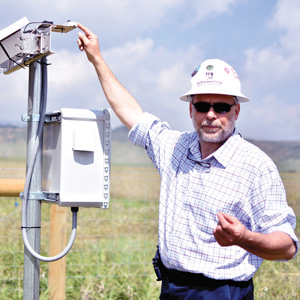
“Since its inception, The Environmental Partnership has been an active supporter of the efforts at our Methane Emission Technology Evaluation Center (METEC). With the funding they provided, Colorado State University was able to secure a grant from the Department of Energy to advance the development of cutting-edge methane detection technologies. We look forward to continuing this work and our engagement with the participating companies to test these technologies at their facilities in the field this year.”
Dan Zimmerle
Director of the Methane Emissions Technology Evaluation Center at Colorado State University’s Energy Institute
See our progress in the 2021 Annual Report (4 MB).
